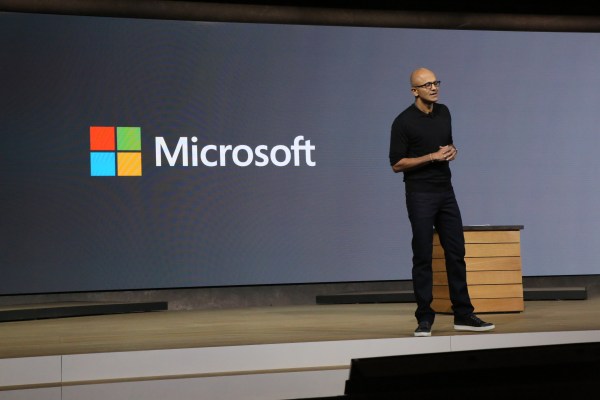When Microsoft announced its Windows 10 strategy last year, the thinking was that the unified platform would drive Windows Mobile and finally bring the Windows phone out of the doldrums where it’s been virtually forever.
The idea was you could develop once for Windows 10 desktop and easily share that code on any device, making it impossibly attractive for developers, which would finally drive Windows Mobile popularity in a beautiful virtuous development cycle.
Unfortunately, it hasn’t worked out that way, and Microsoft finds itself in an unusual position, developing software for iOS and Android because it simply doesn’t have a viable Windows mobile ecosystem.
According to comScore’s latest market share numbers, Microsoft had 2.9 percent market share in the U.S. for the fourth quarter last year. That was unchanged since September, in case you were wondering. In its fourth quarter earnings report in January, Microsoft reported a smartphone platform deeply in decline.
That would cover the period where the Windows 10 mobile development magic was supposed to be happening. As you can plainly see, the plan doesn’t seem to have worked as drawn up.
Windows 10 is out. It appears to be getting great adoption on 270 million devices, but it doesn’t seem to have trickled down to Windows smartphones much at all.
Singing different tunes
Here’s how Satya Nadella outlined how he hoped his mobile strategy would play out in an interview with Mary Jo Foley of ZDNet last year:
“[T]he free upgrade for Windows 10 is meant to improve our phone position. That is the reason why I made that decision. If somebody wants to know whether I’m committed to Windows Phone, they should think about what I just did with the free upgrade to Windows, rather than — hey, I[‘m] making four more phone models of value smart phones.”
In an interview with Matt Rosoff from Business Insider this week, Rosoff pointed out the lack of discussion of Windows Mobile at last week’s Build developer conference. Nadella’s position was more nuanced this time:
First of all, I don’t think of Windows for mobile differently than Windows for HoloLens or Windows for Xbox now. We have only one Windows. We don’t have multiple Windows. They run across multiple form factors, but it’s one developer platform, one store, one tool chain for developers. And you adapt it for different screen sizes and different input and output.
TechCrunch’s Haje Jans Kamps also noticed that the Windows phone was conspicuously absent from the Build conference keynote discussions. At one point while introducing Xamarin, the presenter put it like this:
“We don’t care if it’s Android or iOS, we have you covered,” the presenter said, and continued onto the rest of his presentation. “Spot any platforms missing from that two-bulletpoint-list,” Kamps wondered with his tongue firmly planted in his cheek.
Getting by with some help from their friends
The question remains; can Microsoft succeed without a strong Windows mobile position? From the looks of things, they don’t seem to have much choice. Nadella appears to be staking his position in the cloud, which is a perfectly reasonable way to play it, while opening up his company’s tools to iOS and Android in the absence of any meaningful Windows phone adoption.
When you look at the beauty of the mobile-cloud connection, it’s understandable Microsoft would want to be there with Windows, but perhaps Nadella is beginning to understand that Windows is not necessarily the future of the company — Azure and Office 365 are — and that could explain why the company stayed firmly focused on these two areas at Build.
When you combine that with the idea of bots created by Microsoft, including Cortana (Microsoft’s talking virtual assistant), that can run in Microsoft’s tools or external platforms like Slack and LINE, you start to see a vision where Microsoft thrives even without an in-house mobile platform.
As the world moves swiftly to that mobile-cloud intersection, perhaps the underlying OS becomes less important. If that’s the case — if Microsoft can have a piece of the underlying cloud-mobile plumbing and have apps and bots created in its ecosystem, run anywhere on any device — it renders the Windows phone gap irrelevant.
For Microsoft with its weak mobile position, it had better hope that’s the case.
